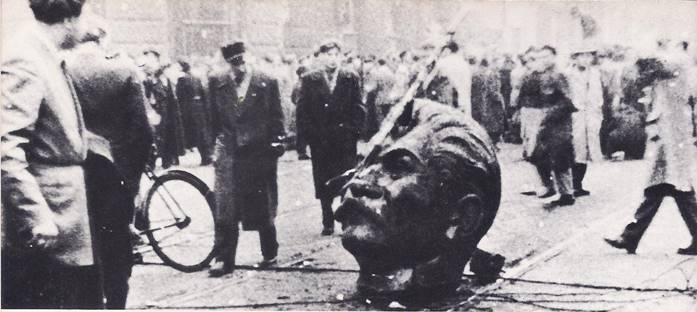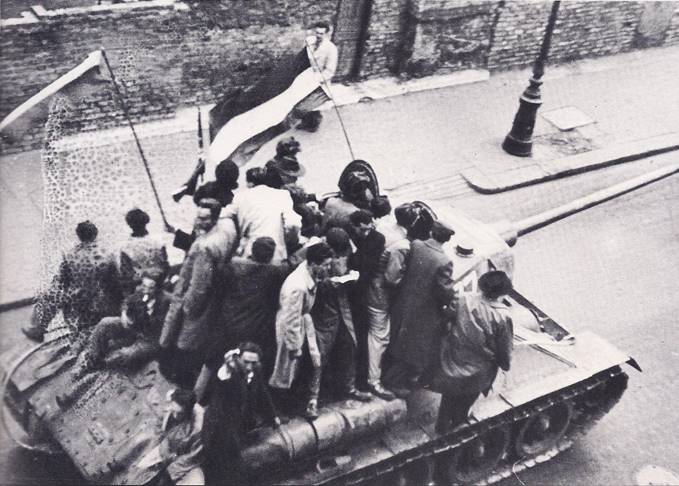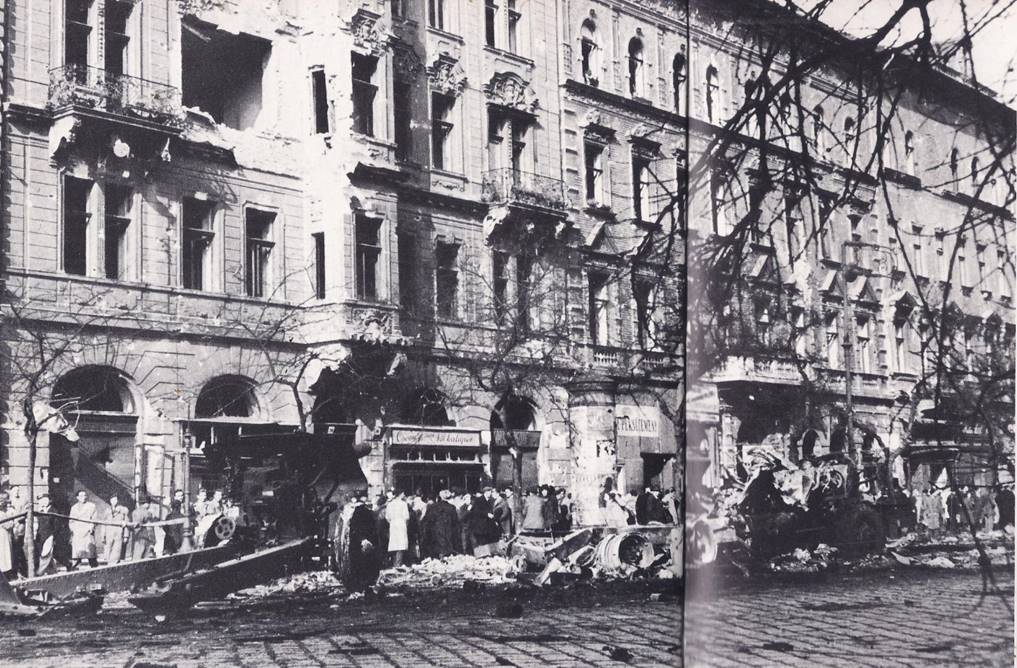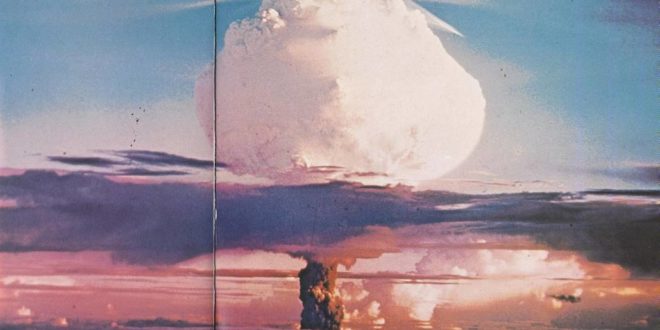All times are, more or less, times of change, but the changes that took place in the 1950’s and 1960’s were extraordinary. This was particularly true in the part of the world dominated by the Soviet Union. During Stalin’s rule, the satellite countries — East Germany, Poland, Czechoslovakia, Rumania, Hungary, Bulgaria and Albania — were like provinces of Russia.
The one exception in Eastern Europe was Yugoslavia. In 1948, the Yugoslav government, headed by Josef Tito, refused to follow Stalin’s orders and insisted on maintaining its independence. This was possible for two reasons. There was no Russian army in Yugoslavia, as there was in other countries and Yugoslavia did not border on the Soviet Union. Tito’s defiance enraged Stalin, who boasted, “I will shake my little finger and there will be no more Tito. He will fail.” Stalin was certain Tito would fail because Yugoslavia carried on almost all of its trade with Eastern Europe and lacked the resources to be self-sufficient.
Stalin had not reckoned with the United States. Realizing that it would be wise to support Tito in his struggle with Stalin, the United States gave military and economic aid to Yugoslavia. The little country prospered and gained complete independence from Russia. Stalin and not Tito, had failed. For five years the people of Eastern Europe were quiet. Then in June of 1953, three months after Stalin had died, the workers of East Germany rose up against the government of Walter Ulbricht, who had been hand-picked by Stalin. The Communist government might have been overthrown if the Russian army had not been called in. The troops crushed the revolt and Ulbricht remained in power — but the uprising was a warning of what was to come. Three years later, after Khrushchev’s famous “de-Stalinization” speech, Eastern Europeans asked themselves why they should continue to obey their own Stalinist governments when the ruler of Russia had himself denounced Stalin. Moreover, Khrushchev had apologized to Tito, admitting in effect that Tito had been right in his dispute with Stalin.
Eastern Europe rumbled with discontent and the first explosion came in Poland. On June 28, 1956, workers in the industrial city of Poznan went on strike for higher pay and better working conditions. Their demands were modest, but in making them at all they were daring to oppose the government. By the middle of October, the country was close to revolution. Students, intellectuals, workers and farmers were demanding democracy and freedom and the ouster of the Stalinist government. Even the Polish army supported them and the government realized it could stay in power only if it called out the Russian troops that were stationed in Poland.

At this point, Khrushchev came to Poland with his advisers and army chiefs of staff. He did not want to use the Russian army against the Poles, but neither would he permit a revolution to take place. After days of bargaining, he and the Poles worked out a compromise. The old Stalinist government would be replaced by a Communist reform government under Wladislaw Gomulka, who had once been imprisoned because he believed Poland should become more independent of Russia. The Poles did not greatly care for this compromise — after all, the government would still be Communist — but they had no choice. If they tried to form a non-Communist government, Khrushchev would call out the Russian army. Even the Cardinal of Poland, who detested Communism, urged Catholics to support Gomulka as the lesser of two evils. By November of 1956, Gomulka had been installed as premier and Khrushchev had returned to Moscow. Although the Poles had not been able to get everything they wanted, they had won more freedom than any other people under Communist rule.
In Hungary, whose government was one of the most brutally Stalinist of any in Europe, discontent had also been growing. When the Hungarians learned of the events in Poland, they, too, decided to force a change. On October 23, 1956, people began to gather in the streets of Budapest, the nation’s capital, to express their sympathy for their “Polish brothers.” Before long, the streets were full of people. They pulled down the towering statue of Stalin that overlooked the central square of the city and broke it into pieces. Then they marched to the building that housed the radio station and chose delegates to go inside and announce their demands. When, after a time, the delegates did not return — evidently they were being held as prisoners inside the building — the crowd surged forward against the armed police guarding the entrance. Shots were fired; people fell; the police were knocked down and trampled.
Soon the building and the radio station swarmed with people surging in from the streets. The Hungarian revolution had begun.
Quickly it spread to other cities and the countryside. Workers elected their own factory councils and threw out their Communist labour union leaders. Farmers claimed land which had been taken from them. Local Communist party members either joined the uprising or were removed from office. Members of the secret police fled for their lives; those who were caught were shot or imprisoned.

To appease the people, the old Stalinist leaders formed a new government headed by Imre Nagy. Like Gomulka, he was regarded as a liberal Communist friendly to Tito’s ideas. He promised to grant some of the people’s demands, but the revolution, though still in its first day, had gone too far to be stopped.
Nagy then did something which he soon regretted. He asked the Russian army to put down the revolt and on October 24, Russian tanks rumbled into Budapest. The people, organizing themselves into military brigades, fought back and Hungarian workers throughout the country went out on a general strike. On November 1, the Russians announced that they would leave Hungary and began negotiations with the commander of the revolutionary army on how this should be done. The fighting in Budapest stopped and Nagy went over completely to the revolutionary cause. He agreed to head a non-Communist government and even more startling, promised to take Hungary out of the Communist military alliance. It looked as though the Hungarians had won their revolution.
Then, without warning, early in the morning of November 4, Russian tanks, artillery, and planes launched a full-scale attack on Budapest. The Hungarians fought heroically, but they were no match for the Russian army, and they soon surrendered the city. The Russians installed a new government under Janos Kadar, who had been Nagy’s assistant. The revolution that had been won in eleven days was lost in a few hours.
Kadar’s government tried to wipe out the last traces of the revolution. The commander of the Hungarian army was arrested and shot. Nagy, who had been promised a safe-conduct pass to Yugoslavia, was kidnapped when he left the Yugoslav embassy; later he, too, was shot. The workers were the last to give in; not until December was the government able to force them back into the factories. The workers’ councils were done away with and the strike leaders jailed. Once again factories and unions were under strict government control. Hundreds of thousands of Hungarians fled to neighbouring Austria. Many of these refugees later came to the United States; the rest settled in Canada or western Europe. Some of the revolutionaries who could not escape were executed; others were imprisoned; still others, mainly artists and intellectuals, lost their rights. Thousands of young people who had joined the uprising were sent off to work in Russia for several years.

The Hungarian revolution failed, but it served as a warning to the Communist governments of Eastern Europe. Unless they granted their people more freedom and gained more independence from the Soviet Union, they, too, could expect uprisings, probably followed by the intervention of Russian armies. Slowly, these governments began to change. The Stalinist regimes of Czechoslovakia, Rumania and Bulgaria grew more liberal and even the Kadar government of Hungary made concessions to the people. Above all, they became increasingly independent of the Soviet Union. By the mid-1960’s, the changes had given rise to a new term — polycentrism, or a system with many centres. Each Communist nation now claimed to have its own form of Communism and no longer blindly followed orders from Moscow. The old empire of Stalin was no more.
There were not only differences between Communist nations. There were even conflicts between them, especially between the Soviet Union and China. Since Khrushchev’s de-Stalinization speech, the Chinese Communists, led by Mao Tse-tung, had moved further and further away from the Russian point of view. Mao charged that Khrushchev became a traitor to Communism when he tried to reform Russia and reach agreements with the West. According to Mao, peaceful coexistence meant surrender to “imperialism”; no compromise with anti-Communist countries was possible. He was not even afraid of nuclear war. He said that China, with its enormous population, could lose hundreds of millions of people and still be victorious.
The Soviet Union and China bordered each other for many miles, and they had been in conflict long before they became Communist states. Now the Chinese Communists claimed that Tsarist Russia had seized Chinese territory and they wanted it back. The Russians denied the claim and had no intention of giving up any territory. The two also competed for control of Mongolia, an independent Communist nation situated between them. The Mongolians, fearing that the Chinese would take over their largely uninhabited land, looked to the Russians for protection. As hostility between the Soviet Union and China grew, they began to struggle for influence in the Communist parties of Latin America, Asia and Africa. The Chinese accused the Russians of not sympathizing with the problems of the coloured peoples, because the Russians were white and rich, like Western capitalists.
THE WESTERN ALLIANCE
While these changes were shaking the Communist part of the world, important changes were also taking place in the Western alliance. After the end of World War II, Western Europe had depended heavily on the United States. Between 1947 and 1960, the United States distributed about 50 billion dollars in Marshall Plan aid to Great Britain, France, West Germany, Italy, Den mark, Norway, Belgium, the Netherlands and Luxemburg. By the 1960‘s, these countries had staged an almost miraculous recovery and were nearly as prosperous as the United States. They were rapidly expanding their industries and were sending their manufactured goods all over the world.
Western political leaders realized that this change must mean a change in the relations between the United States and Europe. President Kennedy came forward as the champion of a new Atlantic Community. He favoured establishing a close cultural, political and above all, economic, partnership between the democratic and industrial countries of North America and Western Europe. Such a partnership, he believed, should remove all restrictions on the movement of men and goods so that the Atlantic Community might someday become a completely free and open society like the United States.
Kennedy’s idea of partnership also included drastic changes in the North Atlantic Treaty Organization. NATO had been formed in 1948 by the United States, Canada and most Western European countries to counter a possible Russian attack on Europe. But as relations between the East and West improved, that possibility became remote. Moreover, Europeans reasoned that if a war should break out, it would be fought with nuclear missiles, not with armies of soldiers. So the NATO countries withdrew more and more of their troops from the organization and it seemed that the Western military alliance might fall apart.
In 1962, President Kennedy introduced a daring new plan to bring the NATO allies more closely together. It was called the Multi-Lateral Force (MLF) or the “mixed-manned” nuclear fleet. This was to be a fleet of ships, some carrying long-range nuclear rockets, whose crews would be made up of men from the NATO countries. Kennedy believed that this plan would achieve three things. It would strengthen NATO; it would prevent the spread of nuclear weapons, since no European would need to manufacture them any longer; and it would lead to the complete integration of European armies. The Atlantic Community would then be a reality.
Kennedy’s plan for NATO met stiff resistance from many Europeans, led by President Charles de Gaulle of France. De Gaulle argued that France could not allow its armed forces to be swallowed up by any organization, especially one that was dominated by the United States. Though de Gaulle said he favoured the idea of an Atlantic Community, he insisted that it would have to be a community of equal and independent nations. He felt that Europe should look out for its own interests, defend itself and develop its own atomic weapons. It should not rely on the United States. He doubted that the United States would risk its own destruction if Europe were attacked.
For all these reasons, then, de Gaulle opposed Kennedy’s “mixed-manned” nuclear fleet, or, for that matter, any attempt to tighten the NATO alliance. Instead, he urged Europe to unite as a sort of “third force.” This “third force” would, in effect, be led by France and would be independent of and equal to, both the United States and Russia. Eventually‚ he hoped, the “third force” would include not only the nations of Western Europe, but also the Communist nations of Eastern Europe. He foresaw a new political community stretching “from the Urals to the English Channel.”
Western Europe in the 1960’s was engaged in a great debate over whether to follow de Gaulle’s policy of European independence and nationalism, or the United States policy of economic and military partnership. The fact that such a debate was held revealed how much the world had changed since the early 1950’s. New ideas and new relationships were springing up so quickly that no one could predict what the future would bring.




